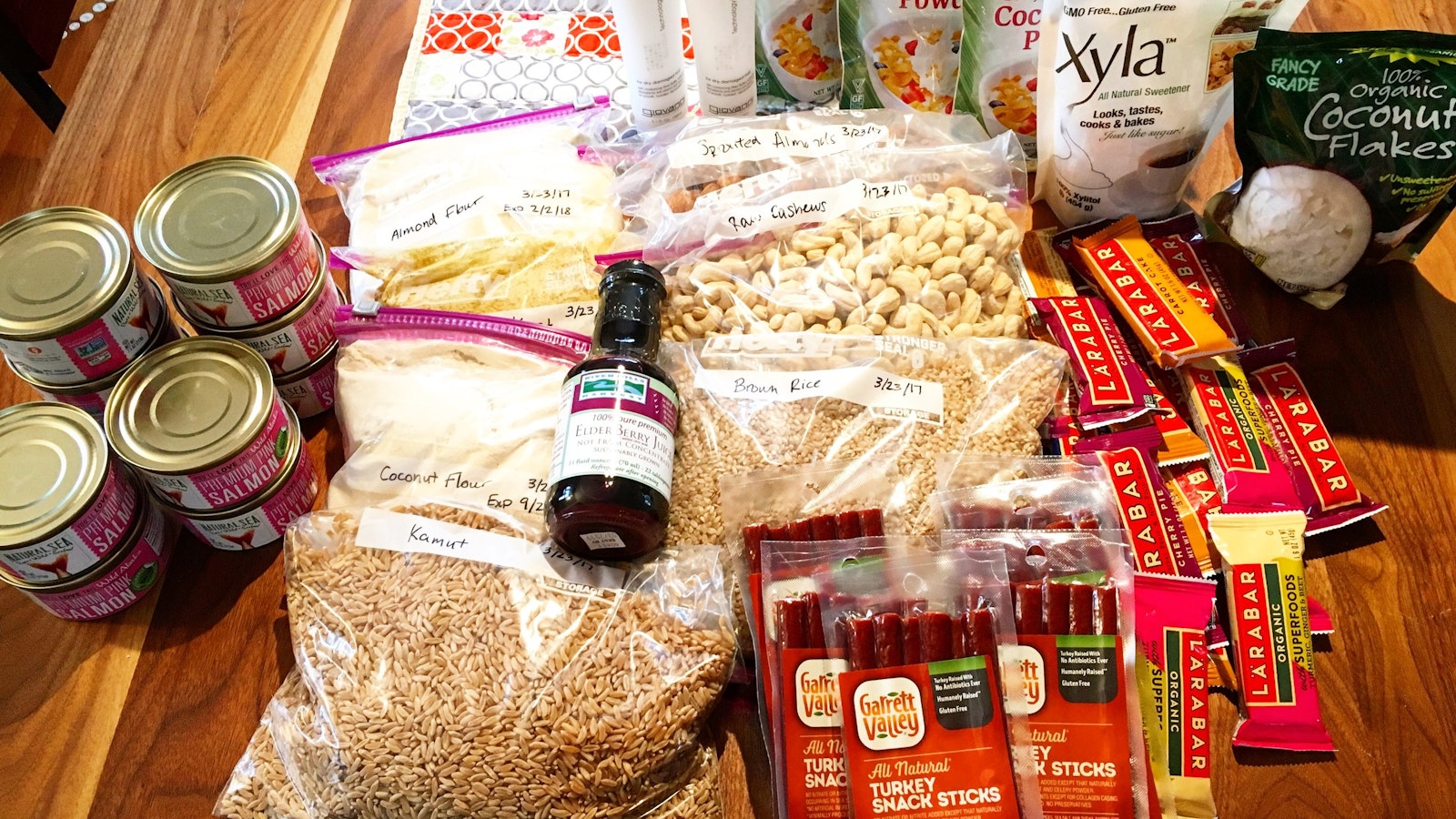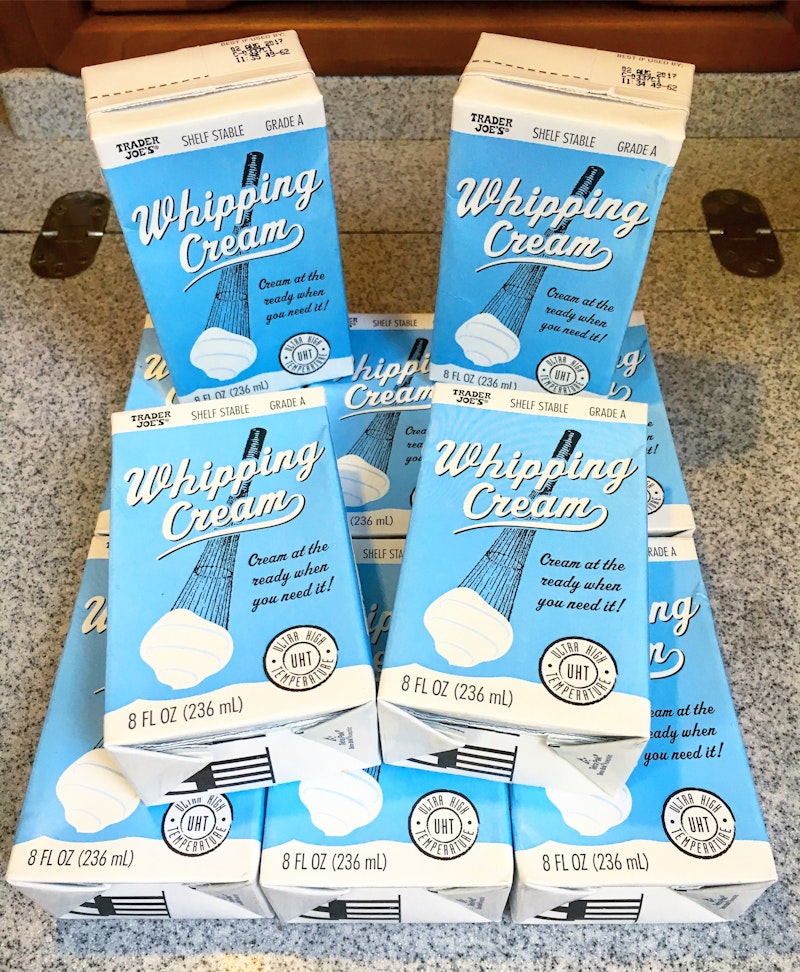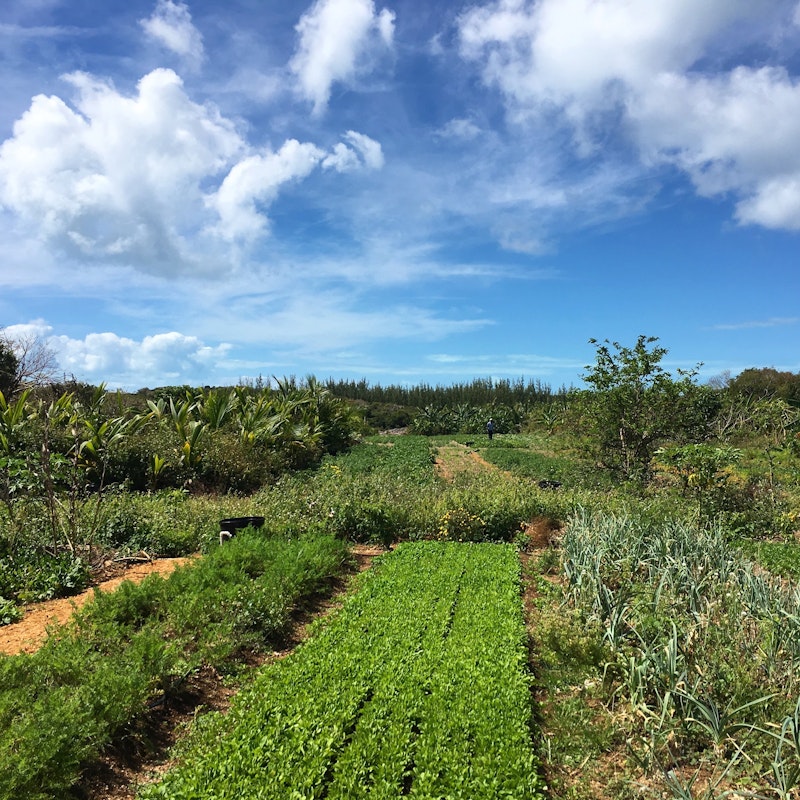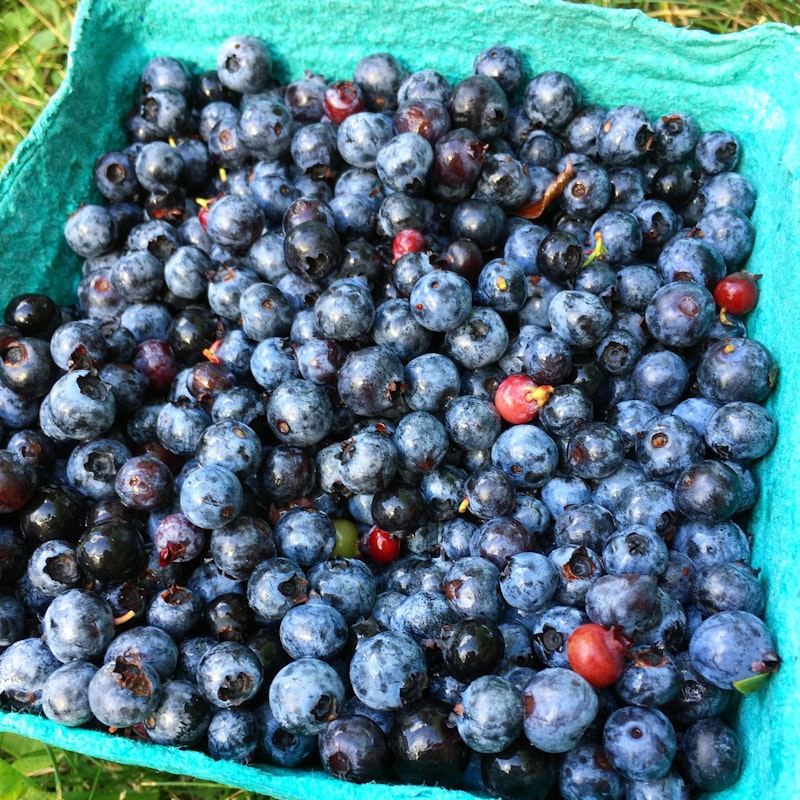
Provisioning for the Bahamas: What Worked, What Didn’t.
Since this is a food + sailing blog, I figure I better produce some fascinating content about provisioning for sailing. Provisioning is fascinating, right? Keep in mind all sailing, all sailors, and all boats are different. Different boats will have different types of storage options and if you’re like us, the boat is half tools, half food, meaning there isn’t endless space for food. Also keep in mind that I'm no expert, this is just what I've learned so far and serves more as a reminder to myself for future provisioning more than anything.
Disclaimer: This post was written after nearly 5 months in the Bahamas, while missing certain foods terribly, but thoroughly enjoying all other parts of the Bahamas. Also, for the purpose of this post, I refer to myself as a "food snob," which to me means that I’ve invested time in getting to know good food, I’ve grown my own good food, I choose good food when available, and I spend a little extra money for said good food. It means that a good percentage of our monthly budget is spent on food. Don't get me wrong, I eat food other than "good" food. I’ll sit and eat corn dogs all day if they’re offered to me, but the food that I choose to write and obsess over is good food.
The Bahamas are filled with more beautiful beaches than beautiful food. We’ve now cruised the Abacos, the Exumas, Eleuthera, Nassau, and Cat Island. If you’re looking for readily available food, Nassau, Marsh Harbor in the Abacos, Georgetown in the Exumas, and most parts of Eleuthera are the places to be. These places also happen to be the less appealing places to be for us as they’re more traveled, less remote, and more like Florida than the Bahamas.
There are a few food unicorns in The Bahamas that were nice contrasts to the rest of the food scene. Eleuthera houses the Eleuthera Island Farm. A short taxi ride from Governor's Harbor brings you to a farm and farm stand with freshly brewed coffee, freshly baked bread, artisan treats like hummus and pesto, as well as a variety of fresh vegetables and fruit grown on the farm. Imagine my surprise of finding this mini farmers market after a few months in the Exuma food desert! Some islands have farmers markets (although I've only been to the one at Orchid Bay Marina on Great Guana Cay in the Abacos), but the variety and schedules change so it's always a pleasant surprise when you're in the right place at the right time.
Eleuthera Island Farm fields
Cruising the Bahamas with the notion that you want fresh food in a somewhat often basis requires one to visit the less appealing, larger towns every once in awhile. If you don't mind canned or packaged food, you could go for as long as your stores allow. Although, the limited amount of fresh food has me thinking that many people both on boats and on land live on packaged food in the Bahamas. One would think this is because it’s inexpensive to do so, but that isn’t always the case.
As far as we can tell, the Bahamian diet consists of fish, conch (which are overfished), macaroni and cheese, chicken, and peas and rice (which is rice with the addition of either peas or some sort of beans). The macaroni and cheese is baked, like a midwestern cheese and pasta casserole. The chicken is mainly barbecued with a sauce that definitely has food dye in it (as most do) so I stay away from it as I'm allergic to dye. All in all, it's not the most nutritious diet or the most appealing. An added depressant is the amount of styrofoam used at nearly every restaurant we've been to. They bypass the plate or bowl and go right to the takeout method by serving your food in styrofoam packaging. In an island nation with nowhere for the plastic to go except into the ocean, this was a huge deterrent for us to go out to eat.
Food in the Bahamian grocery stores is sometimes expensive, aged (and not in the blue cheese kind of “aged”), and dependent on mail boat schedules. Some weeks the mail boat is late, sometimes it comes with just a few boxes of food on it. For this reason, we left the US with months of dry and canned food stores if we became subject to food troubles. Thankfully, most grocery stores are within walking distance from the anchorage, so it's not a big deal if you make the trip only to find it bare.
I'm not trying to insult the Bahamian diet, I'm just trying to give a real account of what we've found in the past two winters of cruising the Bahamas in order to help new cruisers decide how to provision. Some cruisers seem to be okay with the food choices here, which baffles me but is probably a result of the poor diet many Americans have. They're already used to processed and unhealthy foods, and perhaps they've conceded to the idea that you can't always eat good food while living on a boat. I haven’t made this concession obviously, as I've dedicated my blog to revolve around making good food even though we live in a tiny floating home. Still, many cruisers agree that the most difficult part of the Bahamas is the lack of fresh, local, delicious foods. It appears that demand is present for good, fresh food, particularly fruits and vegetables, but the stores in the cruising grounds either cannot afford the inventory or don't want to risk the high cost and quick spoil rate for fresh foods. Food has become the single highest deciding factor in our plans for where to travel next winter, and the biggest reason we'll likely skip the Bahamas on our way to where we go.
Now that I'm done being a food snob, let's get to the specifics. Really, I'm not trying to say the Bahamian islands have NO food choices, they do, but it's a challenge, supplies are irregular, and it's expensive. I should say also, that there are grocery delivery services that ship by plane to different islands. While this is sometimes more expensive, lots of mega yachts and larger vessels do this, skewing the demand for high-quality food in the markets.
Fruits & Vegetables
We're the kind of people that get the "are you guys vegetarians?" question often. I'm not sure why, maybe because we're a skinny family, or maybe because we eat a fair amount of fruits and vegetables. It's silly logic to assume people who like plants are ONLY into plants, but it happens. My Lebanese blood prohibits me from being a vegetarian. I've tried it. It hurts.
Maine Blueberries: $3 for a large container in Maine, this would cost at least $14 in the Bahamas
In a hot and humid climate (85 degrees F / 30 degrees C, with 60-80% humidity daily) many vegetables and fruits have a hard time keeping up their appearances. Bananas go from green to brown in a matter of 3-4 days if we're lucky. I buy them with plans to freeze them as they add to baked goods perfectly and can be a substitute for eggs in recipes if needed. Apples, oranges and other citrus, melons, grapes, and avocados stay well if refrigerated. However, if you're able to find these "exotic" fruits, the prices are often much higher than many are willing to pay. In the rare event that a store has strawberries, expect them to be at least $8.00. I did "splurge" on a tiny package of raspberries (twice) in Georgetown for $6.00 per pack. Plantains are thankfully found in most stores, and they're relatively cheap. The trick with plantains, however, is always having a ripe one aboard if you have green ones. The green ones will otherwise take months to ripen without the presence of a ripe plantain. Pan fry in a little coconut oil, top with coarse salt, and you'll forget that the only kind of apples you can find are mealy Red Delicious...for a moment anyway.
Our fruit consumption consisted of whatever affordable fruit we could find supplemented by our canned peaches, pears, pineapple, and mandarin oranges.
Greens
Greens struggle a bit in our refrigerator as it can get wet from condensation easily due to the interior design and poor seals (we have an in-counter fridge and freezer), but we buy them anyway and eat them quickly. Mixed, fresh, field greens are my favorite but I’ve switched to romaine hearts for long passages with the occasional arugula as a treat. Romaine lasts a long time provided it stays in a plastic bag and dry (I put a paper towel in the bag sometimes) and leftover salads made with romaine keep their crunch for eating the next day. However, with the recent scare of E. coli contaminated romaine, I've opted for other greens.
A package of three conventionally-grown romaine hearts will cost $5-9 depending on the island.
Root Vegetables
As far as root vegetables go, carrots shine with longevity and actually keep their form and function well if stored in a plastic bag in the fridge. Yams, sweet potatoes, beets, daikon and the like all store well in the warmer side of the fridge or a dark, dry place. The cold fridge, although it is humid, keeps the rotting at bay. I had been storing potatoes, sweet potatoes, onions, and garlic in a dark food locker/cupboard, but after a few weeks in the heat the potatoes started sprouting roots (we still ate them) and the onions began growing new onions and getting moldy (we didn't eat that). The garlic is tough per usual and cares not where it's stored, just as long as it's dry. When I have the room, I've been keeping most root vegetables that I want to last awhile in the fridge as the humidity in the boat wrecks them within a week if left out. When we're in northern climates (provided the humidity is not 100% like it is in Maine fog), I keep potatoes and onions out on the counter or in the microwave and they do just fine.
Root vegetables are easier to find than other vegetables in the Bahamas, but the quality varies. Onions often are partly moldy, and potatoes other than russet are uncommon (is it a surprise that I'm a potato snob as well?). Carrots can be found most everywhere. Beets are a nice treat but not always found. Daikon wouldn't be found very often beyond Nassau.
Canned and Frozen Foods
In regards to canned and frozen vegetables, we opt for as many frozen vegetables as we can fit in our freezer, and supplement that with choice types of canned vegetables (i.e. No more canned green beans or peas!). Corn, beets, artichoke, pumpkin, sweet potatoes, and beans (black, pinto, etc) are palatable and sometimes enjoyable while offshore or after the fresh fruits and veggies run out.
I'm not the biggest fan of fish (the rest of the crew is) but I really love canned salmon that's boneless and skinless. It's like canned tuna only salmon! I can hear all you fish connoisseurs screaming that I wouldn't know a tasty fish if it slapped me in the face, and all you others saying, "you live on a boat! Fish!" and you're right. We do fish, but this isn't a consistent food source for us since we aren't any good at it and I'm terrified of ciguatera. Also, canned tuna and salmon are good for making tuna and salmon patties. Add a little almond flour, eggs, frozen spinach, corn, sweet potato cubes, and some spices and you have a wonderfully easy meal!
Garbanzo beans have become one of my favorites of our canned food stores. Having an immersion blender on board allows me to make hummus quite easily. Garbanzo beans, tahini, garlic, lemon juice, salt, and olive oil makes such a nice treat! Of course hummus is available in some stores if you're willing to spend $7-10 per tiny container, which I'm not.
My best advice regarding canned/boxed items is to spend some time in Trader Joe’s before leaving the states. They have items in tetra-pak (like boxes of cream!), as well as a wide variety of canned items that you don't normally find elsewhere.
The 3 things we required from Trader Joe’s were:
 Cream!
Cream!
- Shelf-stable, tetra-pak cream: we have one box left that I’m hanging onto like it’s a pint of silver. It's perfect for when you need whipped cream (which is quite often on our boat). Cardinal cream and evaporated milk have nothing on this.
- Olives: they sell decent canned ones that aren't the normal dyed black olives, as well as a vacuum-sealed bag of fancy, marinated olives. Why I didn’t pack more of these I’ll never know.
- Canned dolmas: grape leaves stuffed with rice in a blend of lemon and oil. They’re perfect for impromptu sundowners with friends or an easy, healthy lunch underway.
Meat and Freezer items
We're lucky to have a separate, functioning freezer, even though it needs a little improvement in the seals as it plows through a lot of energy. We've dedicated most of the space inside (maybe 2 cubic feet) to meat. Being from the north, I have a strong appreciation for sausage and other cured, smoked, or otherwise preserved meats. The union of sausage and sailing is a perfect one: sausages can be fully cooked so preparation time and energy is minimized (a great asset when under sail and sea conditions make it though to be down below at length), they're sold in vacuum packaging (no freezer burn!), they pair well with a tortilla and any fixings you like (read: versatile!), they're pre-seasoned so you don't have to, and they last nearly forever as they're pre-cooked and full of salt! We usually have an unimaginable amount of sausage of all varieties in the freezer.
We left the states with following in our freezer:
- 2 bags skinless/boneless chicken breasts/thighs
- 12 - 1 lb grass-fed ground beef in vacuum sealed packages
- 10-12 packages of sausage
- Butter (I think I brought 7-8 lbs for lots of pies!)
- Extra cheese
- Frozen vegetables
- Chocolate baking chunks (we make a lot of Boat Cookies)
- Any nut flours or nuts that could fit
We learned that any meat that wasn't vacuum sealed gets freezer burned if not consumed within a few weeks of being in our freezer. We learned this the hard way. If you don’t know what freezer burned chicken smells like while cooking, consider yourself lucky. This fact makes packing ground beef more beneficial in the future.
As far as meat availability in the Bahamas, it varies. Most of it comes from the US, making it more expensive than you'd think, and making me question the amount of time it remained frozen in its journey. 99% of meat available is frozen. Many stores had chicken, although the quality was very fatty (lots of grease while cooking), and it was expensive for the quality (it wasn’t organic nor did I find any organic, free-range chicken in any store). Steak, pork, ground beef, and local mutton can be found in varying degrees of quality and price. We knew that meat would be at a premium in the Bahamas, so we packed a lot from the beginning and supplemented it with Bahamian meat on occasion. Nearly five months in, we still have ground beef from the US, so I guess I can stop hoarding it!
Dry Goods
A lot of provisioning advice will suggest not packing a lot of flour, rice, pasta, and grains because you can buy those things anywhere in the world for a reasonable price. I tend to agree with this notion, however, I'm really picky about my grains. A friend found bugs in pasta and flour purchased in the Bahamas, which made me panic and search through all of our Bahamian goods for signs of bugs. Thankfully we had no issues.
Baking with enriched flour is a sort of torture for me, and I require unenriched, unbleached, organic flour, because I'm a baking snob. Living in Minneapolis, this was no issue as I exclusively shopped at Seward Coop, which had numerous locally milled, organic flours (sure was nice to live on the prairie, in that regard). Would you believe, however, that nearly every mainstream supermarket I've been to on the US east coast and the Bahamas lacks unenriched flour? This is why I recommend packing plenty of your favorite dry items.

We came to the Bahamas with 12-five pound packages of organic, all-purpose white flour. You read that correctly. We brought Whole Foods' organic all-purpose white flour, but since they're in paper packaging, Bob's Red Mill Organic All-Purpose flour might be a better choice on a boat as they use plastic bags. I simply wrapped my paper bags in plastic bags. After many batches of baked goods for our friends and a flour-intensive sourdough project, I ran out a few weeks ago and had to buy enriched bread flour. It wasn’t any more expensive than the organic flour in the US, but it was still painful.
Other dry goods that I pack a lot of included my favorite meat sticks (because I like them for a protein enriched snack and they last nearly forever), granola/snack bars (the Bahamas has a few brands which are expensive so bring your favorites), Barbara's Cheesy Puffs, Ritz crackers and potato chips (for seasickness), tortilla chips, and nuts/ seeds (because they’re very expensive in the Bahamas).
 Almond butter for $20.34 in Georgetown, Exumas.
Almond butter for $20.34 in Georgetown, Exumas.
A note on prices of chips/crackers/nuts/seeds or basically anything you like to snack on: it’s all so expensive in the Bahamas! Medium bags of tortilla chips are easily $7-8. Disgusting, maybe rancid, non-organic peanuts are an ungodly amount of money. If you’re diet consists of a lot of healthy nuts and seeds, Trader Joe’s is your friend and stock up. Just remember to keep the nuts and seeds cool and dry so they don’t go rancid in the heat.
Dairy & Eggs
Don't worry, I haven't forgotten eggs! Eggs last a lot longer than they're advertised and will even last for 1-2 weeks (depending on climate) out of the fridge provided they stay relatively cool and dry, and they’re rotated in their container every few days.
Eggs were easy to find most anywhere in the Bahamas. Some stores had Organic Valley free-range eggs or the local organic option. The most we paid for eggs was $12.99/dozen at Highborne Cay in the Exumas. The marina there has a well-stocked store, but you’ll obviously pay for it. The lowest we paid for eggs was $2.50/dozen. Generally the local brands are between $3-5 per dozen and unlike the conventional eggs from US factory farms, Bahamian eggs have a healthy-looking, bright yellow yolk. Egg quality and availability were the wonderful suprises of food in the Bahamas.
Cheese is limited but available in relatively inexpensive blocks. It’s mostly cheddar, don’t get prepared to find Swiss or pepper jack regularly in the out Islands.
Cow's milk is available but again, it’s more expensive than one would prefer and it’s definitely not without hormones or grass-fed. We don’t do much cow’s milk much to Rev’s chagrin so I packed many tetra-pak cartons of Trader Joe’s unsweetened almond milk.
Butter is one of those items that isn't all that expensive in the Bahamas. KerryGold is a common brand that is sold for about $2-3 per half pound. Granted the same KerryGold would be about $4 per pound in the states, it's grass-fed butter in another country: one of few grass-fed items around.
In Summary
My strategy for provisioning for the Bahamas was to pack as much food as space would allow in our boat. We don’t have the most storage for a 43 foot boat, but we did relatively well. We didn't run out of canned fruit, fish, or beans (seriously I think I packed 40+ cans of beans). We also didn't run out of grains!
My biggest suggestion is that you pack what you like to eat and what makes sense to cook/prepare. You can have a boat full of something but if you don't know how to prepare it efficiently or don't enjoy eating it, you certainly won't want to prepare or eat it while underway.
You're not going to go hungry in the Bahamas, but if you're foodies like we are, you're going to miss a few things. I'm strongly hoping that the rest of the world offers more food and food culture than the Bahamas. From what we hear from other travelers, it does!
Did I forget anything? What has been your experience with food in the Bahamas? In the Caribbean? Where should we go next winter?

